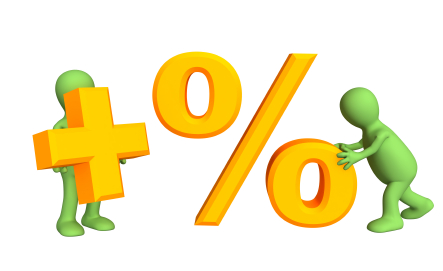
Welcome to Michigan Lakes!
We are all about Michigan lakes. Life on, in and near Michigan's lakefront brings a richness that rewards for a lifetime. Have a story or comments on your experience? You can be one of the first to share it with the world on our Michigan lake directory.
- Error
Do not be Confused by Interest!
 Interest is the fee a lender charges for the use (rental) of their funds. Without interest, lenders would not be willing to lend.
Interest is the fee a lender charges for the use (rental) of their funds. Without interest, lenders would not be willing to lend.
When comparing one loan offer to another, we often look the interest rates (expressed as a percentage rate) as the comparison point. For example a $10,000 mortgage is offered at the interest rate of 6% per year. If the borrower borrows $10,000 for one year, the interest (fee charged) is $600 for that year.
Sounds simple, but it can be a little more complicated. Sometimes a lender will charge other fees for their loan. A common fee that can be charged is called a point. A point is one per cent (1%) of the loan amount. In our example of $10,000, if one point is charged, the cost would be $100.00 This one time fee sometimes is considered prepaid interest. It is due when the loan has been taken out, but is repaid over the term of the loan.
Here is where it may get confusing. Some lenders may offer a lower rate of interest, but charge higher points and fees. Others may offer higher rates, but charge lower or no fees or points.
How do you compare the one to the other? Examining the Annual Percentage Rate, or APR, is one way to compare one loan to another. The APR is the percent of the principal that has to be repaid, including the interest. The APR also includes points and other fees that could be charged. In other words, it is the effective interest rate including the fees charged.
How do you figure the APR of a loan? It is very complicated. You, the borrower, should not have to to figure the APR of the loan. The lender is required by law (The consumer Credit Act of 1974) to disclose the APR to you prior to your accepting of the loan. If the APR is the same as the interest rate, that should mean there are no additional fees.
I know you are thinking, “This is so confusing”. Yes, it is confusing, and I am sure if lenders would be honest about it, they would agree it can be very confusing.
There are two sides of the loan to remember. To the borrower it is an expense. To the lender it is income. To make it simple; if you are the borrower, the lower rate the better. If you are the lender, the higher the rate the better. Study the options carefully, compare the lender’s good-faith estimates and always borrow wisely.

